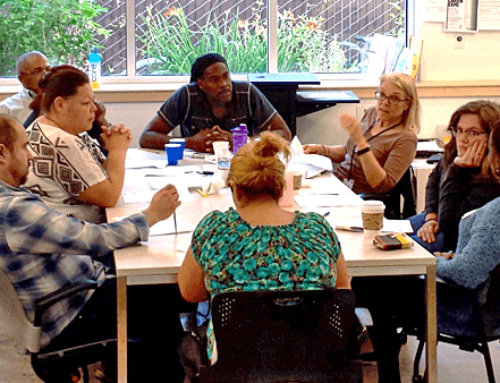If you are a local public agency, nonprofit or business leader, how do you think about the people who live in your area? Are they voters? Donors? Customers of your product? Of a service? Volunteers?
Leaders and staff at agencies routinely use language and practices that regard residents in terms of the function they play in the storyline of the employer organization. Are people the recipients of the quality public service you aim to offer? Purchasers of your product? An audience for your worthy messages? Someone who needs your help? Someone who should be helping more than they do?
At Common Knowledge, we have long tracked the language and mental maps and models people use as they move out and about in community life, whether in local towns, city neighborhoods or more rural areas. Why? To see how well their various worldviews match the communications and invitations coming at them – and to help clients and partners resolve some common disconnects. Over time, we also observe how organizational communications impact the connective tissue of the whole local community.
Many scholars have demonstrated that an entire community thrives when there are more robust connections between different parts of a community. The benefits arise not from the linking of anchor institutions, but at the level of thousands of day-to-day interactions in any one neighborhood. It is human to human contact, both one to one, and small group to small group that feeds the soil of community life. This is an organic, non-linear highly relational entity, which in turn is affected by both the natural and built ecosystems of that local place. It is into this existing and evolving network of social organisms that your organization chooses to engage with people.
Yet the phrases sometimes used to capture some or all of community life are commonly more technical or academic, such as:
-
- Civic infrastructure
- Social capital
- Social cohesion
There is a professional and academic culture that needs to define this dynamic entity of “life in the community” in ways that can be measured or lend themselves to expert analysis. Yet this tends to create a disconnect with how community members see themselves. As a comprehensive study by PACE showed, the term “civic” does not connect with most people. In our work, the word “community” – when accompanied by a warm peer invitation – has been the single most effective magnet for local participation.
In our qualitative research to date, “social capital” also is a far cry from how people see themselves. “Capital” is language for investments. That is confusing at best and often mildly offensive at the prospect of one’s network relationships being valued for someone else’s gaze. ”Social” is a mixed bag. It does refer to human relationships, but does not carry meaning that holds the shape of a local community.
As an alternate perspective from the grassroots, the banner proudly held by our colleague Alma Miller and her late mother Alma senior shares the simple clear language they chose for how to engage people with voting and volunteering: “Grow the Good in Your Community.” Alma and her mother have had years of lived experience as cultivators of local community in schools, libraries, extended families, churches, clubs and more in English, Spanish and American Sign Language. They are exemplars of the many kind community leaders who have been generous to Common Knowledge with their seasoned wisdom, planting seeds we want to pursue further.
Grow the good in your community. Grow is organic not civic. Community is relational, not policy or legal. Common Knowledge is collaborating with grassroots community members and networks to continue listening to the language and mental models they have around the entirety of their local communities.
Our placeholder term to refer to the full body of community life is the Communiverse. We do not expect that to be the language that people use, but for us it is a term that holds not just the visible institutional pins in the landscape but also the invisible mycorrhizal networks that share information and resources. How do information and trust flow organically in and around your community?
Let us know if you’re interested in this inquiry and you may well have essential insights. In the meantime, pause before you address people only with the role you see them as most – e.g., as consumers or producers, as stakeholders or shareholders — and also leave room for community members to be vital “care holders” in a messy but lively Communiverse.






Leave A Comment
You must be logged in to post a comment.